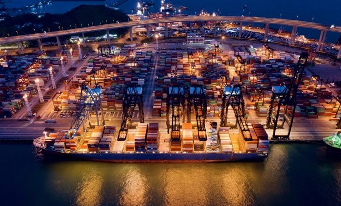
It’s also the time when ship
operators, importers and freight forwarders sit down to discuss long-term
contracts.
At the best of times this is an intricate dance between multiple
stakeholders with billions of dollars in revenue, inventory and infrastructure
on the line. Negotiating these deals is a massive exercise in game theory. Each
party is trying to assess their own needs while guessing what their counterpart
has to offer.
In 2024, the process could be even more complex than at the height of
the Covid-19 pandemic when demand soared and logistics got snarled by
shutdowns. We can think of the swing factors affecting shipping supply and
demand as divided into anticipated and unanticipated variables. In the
first category there are risks that the industry has always known exist, even
if their timing or severity cannot be well forecast: inclement weather, crop
yields, fluctuating oil prices and recessions. The unknown unknowns include war, pandemics, embargoes and
sudden financial crises. .
Right now, the standard variables such as a possible recovery in global
economies and resultant trade flows are not particularly clear. Even central
banks aren’t quite sure which way the wind is blowing. More tricky, though, are two major wars that have no clear path to
peace and whose impacts are spreading beyond the battleground. Russia’s
invasion of Ukraine is into its third year, so shipping companies already know
which sea lanes to avoid and how trade flows have changed.
The Israel-Hamas war, however, has spilled out into the Red Sea as
Houthi rebels, supported by Iran, create terror and uncertainty for one of the
world’s busiest shipping routes. There’s
no way to predict when the attacks, which began in November and include
missiles targeted at vessels in the waters near the Suez Canal, may end.
The game theory comes in when a buyer not only needs to assess its own
needs, but work out whether shippers may have excess capacity in the future
— because no one else locked it up in long-term deals — or could be
short of slots because others made an early bet. The impacts on consumers range
between shortages and stubbornly high inflation, or a glut and price cuts.
There’s already confusing
signals flashing this negotiating season. Global trade is at a relatively
normal level compared to the frenzied days of the pandemic, yet shipping
rates remain high.
In this regard, the data points to bullishness.
Hamburg-based xChange Solutions GmbH, which tracks container-price
sentiment through its xCSPI Index, notes that while prices have dropped,
the measure of the market’s mood hit an all-time high in February. It’s
still in positive territory and much higher than a year ago, indicating
“supply chain professionals remain positive about the container price hikes
further into the month of March owing to the persistent Red Sea situation and
its implications on supply chains,” xChange wrote March 5.
This year’s matchup between buyers and sellers offers players
a choice: follow the hard data on consumer demand and economic recovery,
or lean into sentiment and gut feeling.
Either way, big bets will be placed or we’ll all wear the consequences.